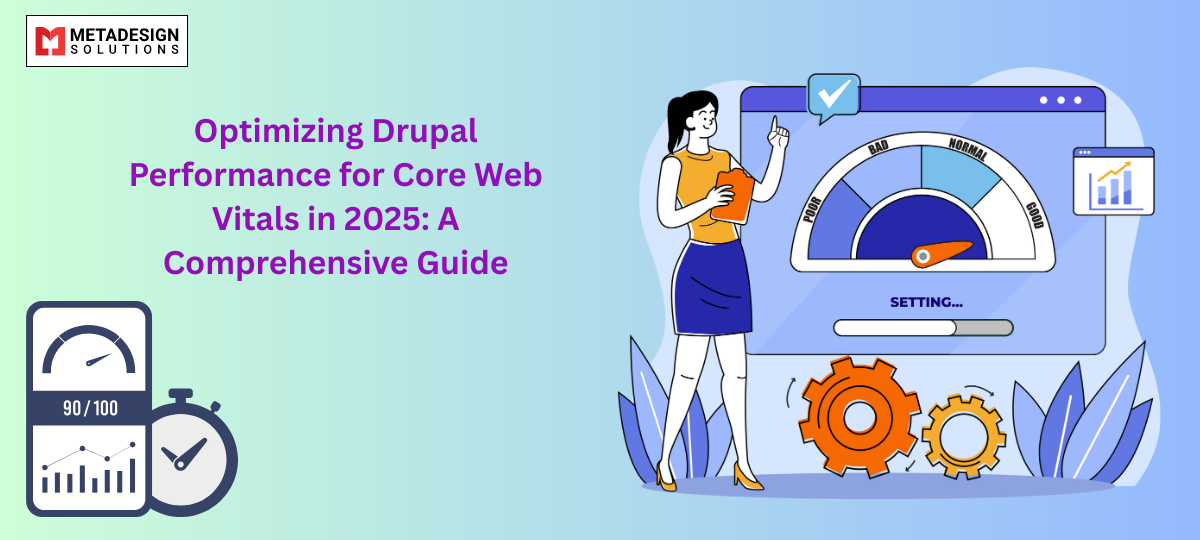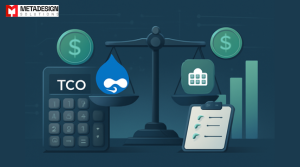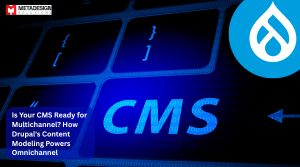In the rapidly evolving digital landscape of 2025, website speed and user experience aren’t just nice-to-haves — they’re make-or-break. Think about it: if a potential customer lands on your Drupal-powered eCommerce site and the product page takes forever to load or jumps around as it loads, chances are they’ll bounce faster than you can say “conversion lost.”
That’s why optimizing for Google’s Core Web Vitals — like Largest Contentful Paint (LCP), Interaction to Next Paint (INP), and Cumulative Layout Shift (CLS) — is crucial. Whether you’re managing your own site or working with a top-tier Drupal development company, this guide breaks down actionable strategies to boost those scores and give your users a smooth, snappy experience that keeps them coming back.
Understanding Core Web Vitals in 2025
Google’s Core Web Vitals have undergone refinements to better assess user experience:
- Largest Contentful Paint (LCP): Measures the time taken to render the largest visible content element. An optimal LCP is under 2.5 seconds.
- Interaction to Next Paint (INP): Introduced to replace First Input Delay (FID), INP evaluates the responsiveness of a page by measuring the time from user interaction to the next visual update. A good INP score is under 200 milliseconds.
- Cumulative Layout Shift (CLS): Assesses the visual stability by quantifying unexpected layout shifts. A CLS score below 0.1 is considered favorable.
Optimizing these metrics is essential for enhancing user experience and achieving higher search engine rankings.
Enhance SEO with Improved Drupal Performance
Want to climb search engine rankings through better site speed? Book a meeting with MDS to implement proven Drupal optimization strategies that enhance SEO.
Strategies to Optimize LCP in Drupal
- Efficient Image Handling:
- Optimize Images: Compress and resize images without compromising quality using modern formats like WebP.
- Lazy Loading: Implement lazy loading to defer offscreen images, reducing initial load time.
- Server Performance:
- Upgrade Hosting: Utilize high-performance hosting solutions to decrease server response times.
- Content Delivery Network (CDN): Employ a CDN to serve static assets from geographically distributed servers, enhancing load speeds.
- Caching Mechanisms:
- Page Caching: Enable Drupal’s built-in caching to store fully rendered pages.
- Opcode Caching: Use opcode caches like OPcache to store precompiled PHP code, reducing server processing time.
Enhancing INP for Better Responsiveness
- Optimize JavaScript Execution:
- Defer Non-Critical Scripts: Load non-essential JavaScript files after the main content to prevent blocking rendering.
- Minimize Long Tasks: Break up long-running JavaScript tasks to prevent delays in user interactions.
- Efficient Event Handling:
- Passive Event Listeners: Use passive event listeners to improve scrolling performance.
- Remove Unused Event Listeners: Regularly audit and remove unnecessary event listeners to streamline performance.
- Reduce DOM Complexity:
- Simplify HTML Structure: Minimize the number of DOM elements to enhance rendering efficiency.
- Virtualize Long Lists: Implement virtualization techniques for rendering large lists to improve interaction performance.
Minimizing CLS for Visual Stability
- Specify Dimensions for Media:
- Set Width and Height Attributes: Define explicit dimensions for images and videos to prevent layout shifts during loading.
- Manage Dynamic Content:
- Reserve Space: Allocate space for dynamic content like ads or embeds to avoid unexpected layout changes.
- Avoid Inserting Content Above Existing Content: Ensure new content loads below existing content to maintain layout stability.
- Font Loading Optimization:
- Font Display Strategy: Use font-display: swap in CSS to prevent invisible text during font loading.
- Preload Fonts: Preload important fonts to reduce loading time and prevent layout shifts.
Leveraging Drupal Modules for Performance Optimization
Drupal offers a range of modules designed to enhance site performance:
- Advanced CSS/JS Aggregation (AdvAgg): Combines and minifies CSS and JavaScript files to reduce HTTP requests and file sizes.
- Blazy: Provides lazy loading for images and iframes, improving load times and LCP scores.
- BigPipe: Enables progressive rendering of pages, allowing users to see content faster by loading dynamic parts separately.
- ImageMagick: Enhances image processing capabilities, allowing for efficient image optimization.
Implementing these modules can significantly improve Core Web Vitals metrics.
Monitoring and Testing Performance
Regular assessment of your Drupal site’s performance is crucial:
- Google PageSpeed Insights: Analyzes your site’s performance and provides specific recommendations for improvement.
- Lighthouse: An open-source tool for auditing performance, accessibility, and SEO.
- WebPageTest: Offers advanced testing options, including multi-step transactions and video capture.
Consistent monitoring helps identify bottlenecks and track the effectiveness of optimization efforts.
Conclusion
Optimizing your Drupal site for Core Web Vitals in 2025 is essential for delivering a superior user experience and achieving favorable SEO outcomes. By focusing on enhancing LCP, INP, and CLS through efficient resource management, server optimization, and leveraging Drupal-specific modules, you can ensure your site meets modern performance standards. Regular monitoring and adopting best practices will keep your site competitive in the evolving digital landscape.
Related Hashtags:
#Drupal10 #DrupalPerformance #CoreWebVitals2025 #DrupalOptimization #LCPOptimization #INPOptimization #CLSFixes #WebPerformance #FrontendPerformance #DrupalSpeed #DrupalCaching #DrupalBestPractices #SEOForDrupal #PageSpeedInsights #WebVitalsOptimization #SiteSpeedMatters #ModernDrupal #CMSPerformance #DrupalDevelopers #LazyLoadingDrupal #OptimizeWithDrupal #HeadlessDrupalPerformance #DrupalFrontend #UXOptimization #DrupalCDN #DrupalModules #GoogleRanking



